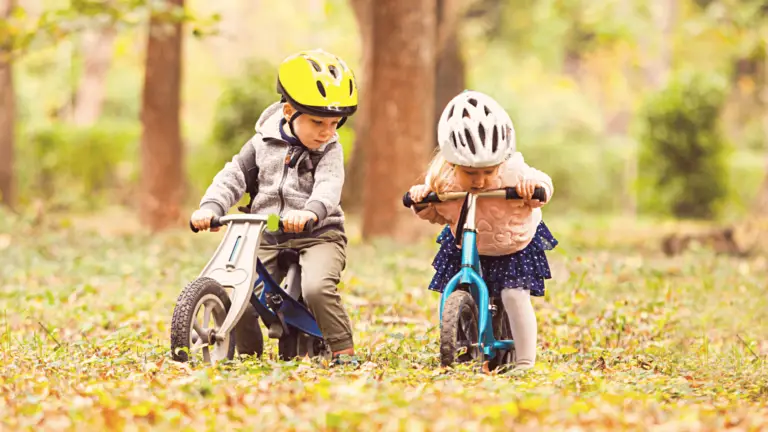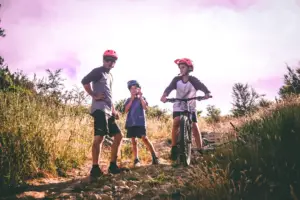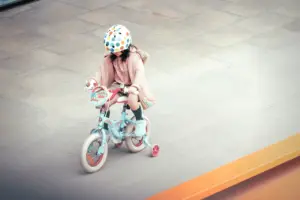When it comes to choosing the finest balance bike for toddlers and preschoolers, “Size” is a crucial consideration that I’ve previously stressed in my Balance Bike Buying Guide. Balance bikes come in a variety of shapes and sizes, but there is no such thing as a one-size-fits-all option.
Don’t get a balance bike that is too big because you don’t want to damage your child’s psychological and physical well-being. Although a big balance bike might not be dangerous to young riders in and of itself, it will take away their confidence and comfort when riding.
If you get a bike that is too little for older children, they might feel silly riding it and will lose confidence.
In the end, an ill-fitting balance bike leads to kids sitting in the incorrect posture, which can impede their learning and result in cycling injuries in the long run.
How to find the perfect size for a balance bike?
The usual method for selecting balance bikes is by measuring the wheel size. The significance of wheel size in choosing the best balance bike for your child is that it influences the rest of the bike’s proportion.
Wheel sizes for balance bikes are typically 12, 14, 16, and 20 inches. The most popular size for both boys and girls is 12 inches. It’s the ideal size to start with for most youngsters!
Follow these steps for further information and you’ll discover that it is quite simple to get a balance bike that’s the right size for your child.
Step 1: Measure the child’s inseam
Because a kid may be short or tall for his or her age, “age” alone isn’t sufficient to determine the balance bike’s size. The most common way to find the appropriate size is to measure your child’s inseam.
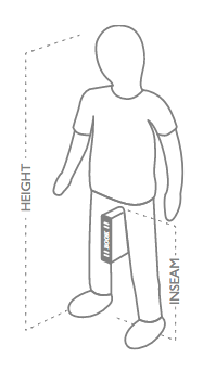
You can accomplish this in two easy ways:
- Have the child stand straight with his back against the wall and legs slightly apart. Then measure the length or distance between the floor and the child’s crotch using a measuring tape.
- It might be difficult to keep active youngsters still at times. As a result, you can measure from the crotch to the bottom of one of your child’s best-fitting pants to determine the inside seam.
Step 2: Determine the weight of the balance bike
When it comes to purchasing a balance bike for your youngster, keep in mind that the maximum weight of the balance bike should not exceed 30% of their body weight. To pick the ideal weight for a balance bike, use this simple equation:
[your child’s weight] x 0.3 = [max balance bike weight]
For example, at the age of two, my daughter weighed 23 pounds. I used a rule of 30 percent to determine her weight and an ideal balance bike should weigh no more than 6.9 – 7 pounds, according to this calculation. (23 x 0.3 = 6.9).
Step 3: Check the balance bike size chart
Look at the chart below to narrow down your choices once you’ve identified the inseam and maximum weight of the bike you wish to buy:
Balance Bike Sizing Chart
| Model | Age | Wheel Size | Min Inseam | Seat Height | Bike Weight | Max Child’s Weight |
|---|---|---|---|---|---|---|
| Woom 1 | 2-3 | 12″ | 10.5″ | 10″ – 14″ | 7.7 lb | 110 lb |
| 12″ Strider (Classic, Sport, Pro) | 2-5 | 12″ | 12″ | 11″ – 16″ | 4.9 – 6.7 lb* | 60 lb |
| 12″ Strider (with extended seat) | 2-5 | 12″ | 15″ | 14″ – 19″ | 5 – 6.8 lb* | 60 lb |
| 12″ Mini Glider | 2-5 | 12″ | 12″ | 12″ – 18″ | 8 lb | 100 lb |
| KaZAM v2e | 3-5 | 12″ | 15″ | 14″ – 17.5″ | 6.5 lb | 60 lb |
| 12″ Schwinn | 2-5 | 12″ | 14″ | 14″ – 16.5″ | 10.5 lb | N/A |
| FirstBIKE (all models) | 3-5 | 12″ | 15″ | 14″ – 18″ | 7.7 – 8.5 lb* | 75 lb |
For more information about the best balance bikes take out our Best Balance Bikes Buying Guide.
Balance Bike Buying Guide
1. AGE OF YOUR CHILD
The sooner you start teaching your children to ride a balance bike, the better. If they can walk independently, try it out with them. The majority of 2 1/2-year-olds are ready for a 12′′ balance bike. Don’t make the decision too late, as children who start riding balance bikes at the age of four will need more time to learn and are more likely to have balance issues.
2. FRAME MATERIAL: WOOD OR METAL?
The frame material has an impact on the weight of the balance bike, so it’s crucial to decide carefully which one you want: wood or metal?
Which to buy? Wooden or Metal?
Wood
Wooden balance bikes are considered more environmentally friendly than metal ones since wood is a reusable resource. Wooden balance bikes are often lightweight, sturdy, and long-lasting, although they must be kept dry because they may warp and rot if exposed to the elements.
Another disadvantage is that these bikes can’t be customized as a result of their smaller seat adjustment capabilities. Many parents, on the other hand, are unperturbed by this. They like the vintage appearance of wooden versions and are willing to pay more for balance bikes constructed out of marine-grade wood (the same type of wood used in boats). Because this wood prevents the bike from getting damaged by water or rain, there are no longer any concerns if it is left outside too much.
Metal
Metal frame balance bikes are popular among parents for the following reasons: They are long-lasting. Metal bikes have a wider seat range adjustment, making it easier to share the bike or make it last a long time.
Metal balance bicycles are made of steel or aluminum, and they are generally a lot more solid and sturdy than wooden built versions. Furthermore, their lightweight frames allow little toddlers to handle, maneuver, and transport them with ease.
In general, there is no clear winner when it comes to the build material of balance bikes since each type has certain benefits. It is dependent on what is most appropriate for your child and whether he or she would want to ride.
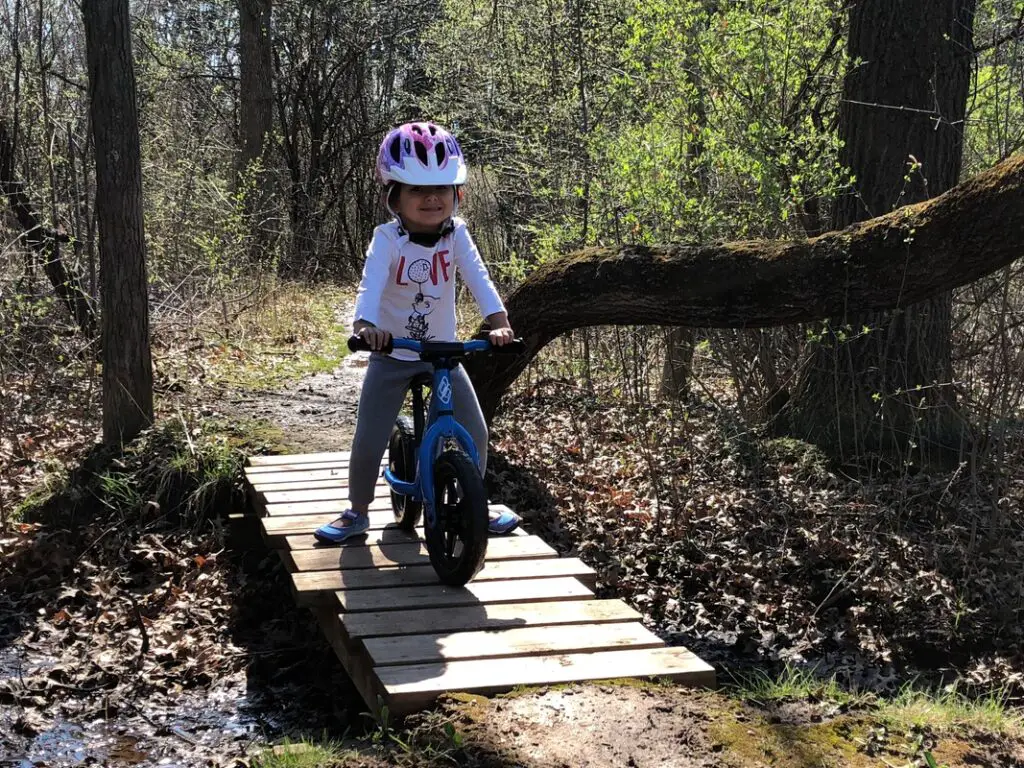
3. TIRES OF BALANCE BIKES
The tires on balance bikes may be made of Fat Boy, EVA Foam, Hard Plastic, Solid Rubber, Rubber Honeycomb, and Standard Air (Pneumatic). 6 sorts have their pluses and minuses.
- Air (Pneumatic) tires – If you want a smoother ride and more traction while riding, consider bikes with Air (Pneumatic) tires. This is the best suspension type for riding a bike on rough terrains, such as outside on a bumpy road.
- Fat Boy tires – this type of tire has greater air capacity than comparable conventional tires, resulting in a more comfortable ride while still providing all of the traction benefits of air tires.
- EVA foam tire bike – the lightest – might be your best fit if your kid will be riding on primarily a smooth paved road outside as this tire will not respond well to a variety of surfaces. These tires are preferred by manufacturers such as Strider because of their main advantage: there is no risk of punctures.
- Solid rubber tire – this tire type is cheap and never goes flat. It is very similar to the air tire but without the cushion the air provides.
- Honeycomb rubber tires – these are only on Burley MyKick balance bikes and combine the best of both air and foam tires as they provide traction and cushion (not as much as air tires) without flats.
- Hard plastic tires – these provide no traction or cushioning. Since they are only really useful for indoor bikes and toys, it is my least favorite among balance bikes’ tires.
4. EASY REACH AND ADJUSTABILITY
I think adjustable seats and handlebars are necessary because they allow the bike to grow with your child, ensuring that your youngster can ride the balance bike for a long time.
People seldom consider how the handlebar influences their decisions, but it can have an impact on their decision-making, particularly if your child is young or a taller than average toddler.
The seat and handlebar of wooden balance bikes are permanently fixed in one position, so consider carefully before purchasing one. On the other hand, most metal balance bikes with this function are quite similar to regular pedal bicycles in that the seat can be adjusted at any height within a certain range.
5. BRAKES
To me, brakes aren’t needed on balance bikes for children under the age of three since they don’t have enough hand strength or size to operate them. However, this is a great feature for older riders because they can learn how to use them before moving up to pedal bikes (ensuring that youngsters do not put their feet down). The need for brakes on a balance bike should be determined according To your child’s maturity.
6. PRICE
Finally, balance bikes come at a variety of prices. Although this may not seem significant when you’re researching different brands and models, it’s important to consider cost in relation to the overall quality of the product. Keep an eye on your budget so you don’t end up spending more than necessary for a bike that doesn’t meet all of your needs.
Avoid settling for a bicycle that is too expensive because you believe you will have to do so eventually. Maybe you won’t be able to find the best balance bike for your target price, but if you shop around, you should be able to locate one that is still within your budget.
FAQs about balance bikes:
What is the minimum and maximum seat height for a balance bike?
Balance bikes typically have a minimum and maximum seat height of 12 inches and 18 inches, respectively.
What is the weight limit for a balance bike?
Most balance bikes have a weight limit of 50-75 pounds, though there are some that can accommodate heavier riders.
What is the age range for a balance bike?
Balance bikes are designed for children aged 18 months to 5 years old. If your child is older than this, they may be too big for a balance bike and should consider transitioning to a pedal bike instead.
What are the different types of tires available on balance bikes?
There are three types of tires available on balance bikes- air tires, EVA foam tires, and solid rubber tires. Air tires provide the most traction and cushioning, while EVA foam tires are the cheapest and have no risk of punctures. Solid rubber tires are only useful for indoor bikes and toys.
What is the difference between a balance bike and a tricycle?
A balance bike does not have pedals, whereas a tricycle has pedals and three wheels. Balance bikes are meant to teach kids how to balance on two wheels, which eventually helps them learn to ride a bicycle. Tricycles are more for transportation and typically have a higher weight limit than balance bikes.
What is the difference between a balance bike and training wheels?
Balance bikes do not have any stabilizing features such as training wheels, which are typically used on children’s pedal bikes to help them balance. Training wheels can be unsafe and unstable, so they are not recommended for use on balance bikes.
What is the difference between a balance bike and a normal bike?
A bicycle has pedals, a balance bike does not have pedals and is meant to teach kids how to balance on two wheels.
Conclusion
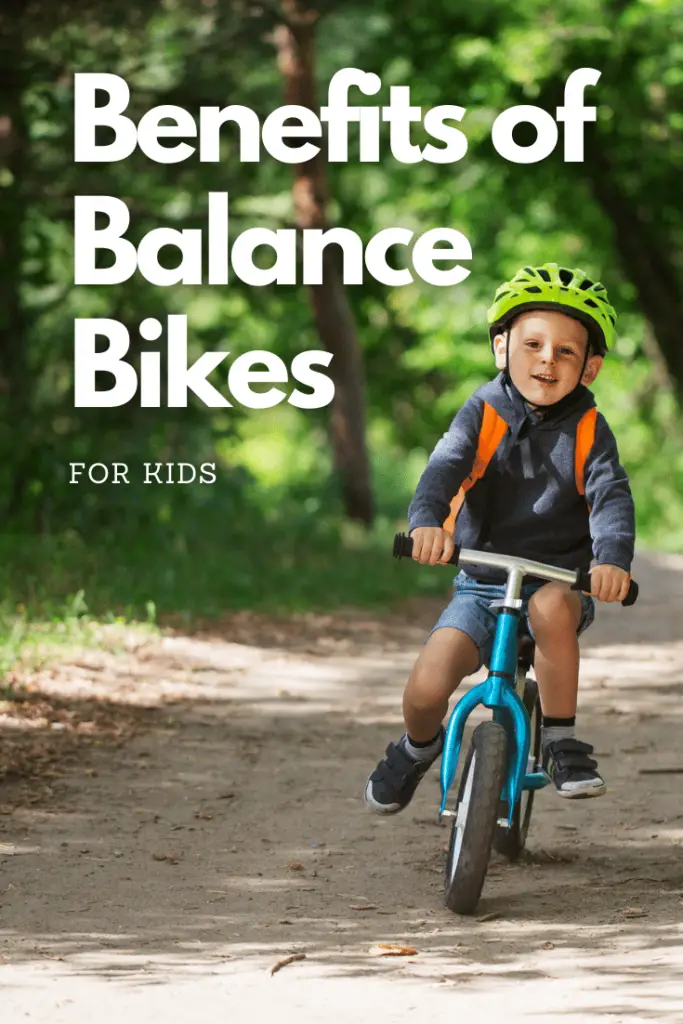
Finding the right size balance bike for your child is essential to ensure a great cycling experience. In order to find the best size, measure your child’s inseam and consult the sizing chart. Remember, the maximum weight of the balance bike should not exceed 30% of their body weight. Have fun choosing the new balance bike!
Looking for a balance bike for your toddler or preschooler? Be sure to check out my comprehensive Balance Bike Buying Guide! It includes everything you need to know when shopping for a bike, plus tips on how to teach your child how to ride!

